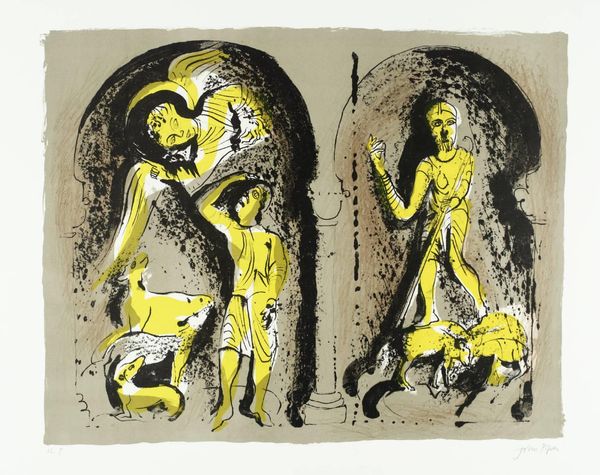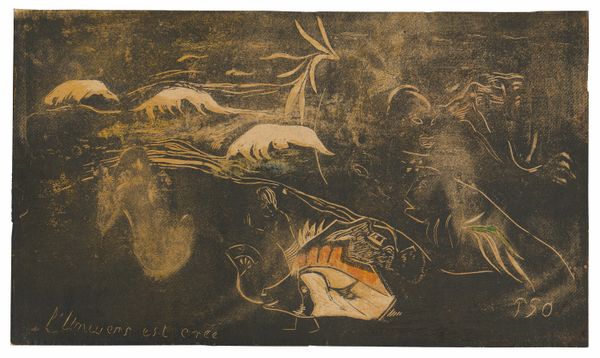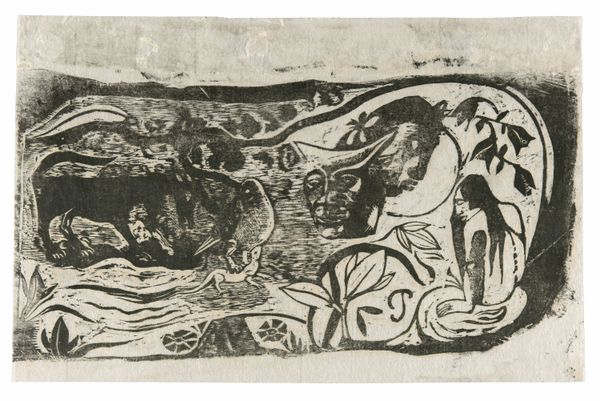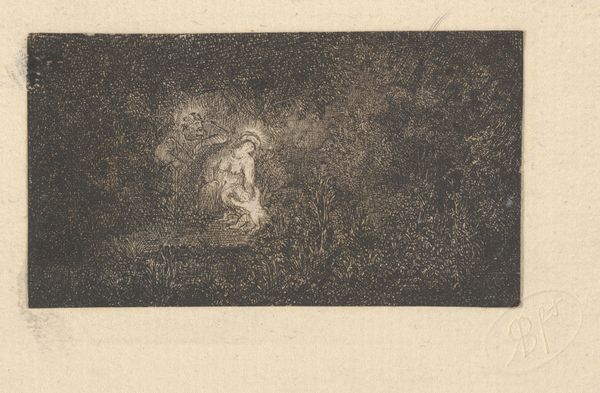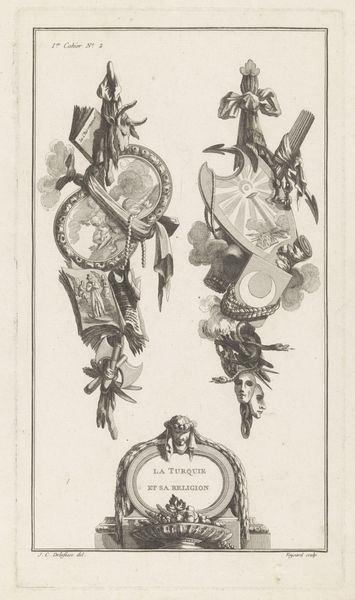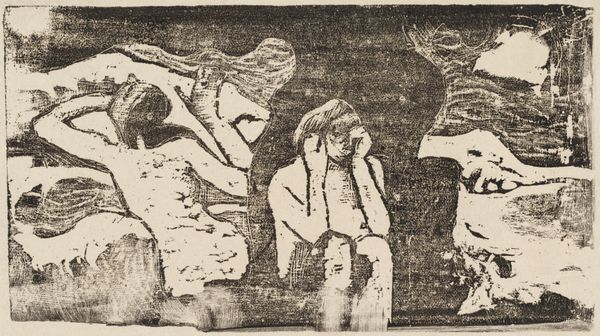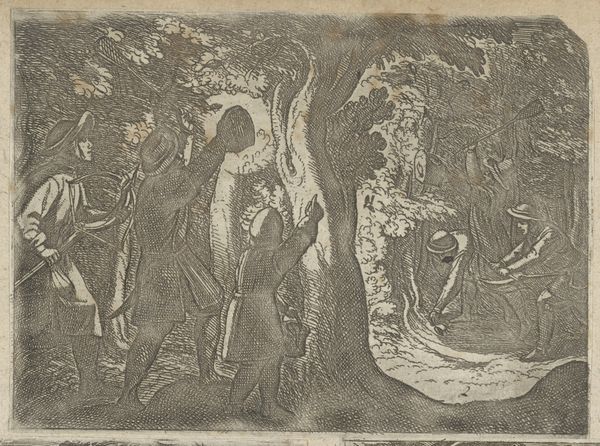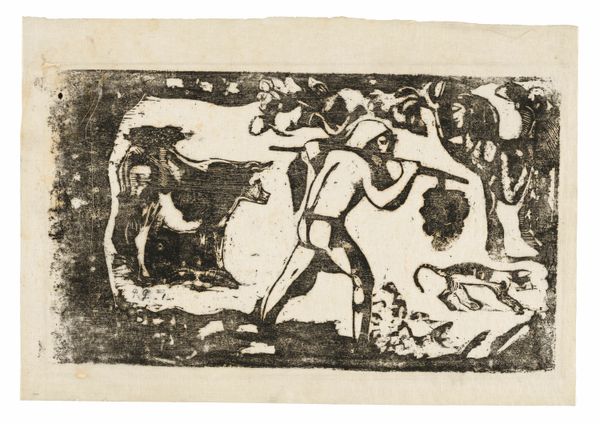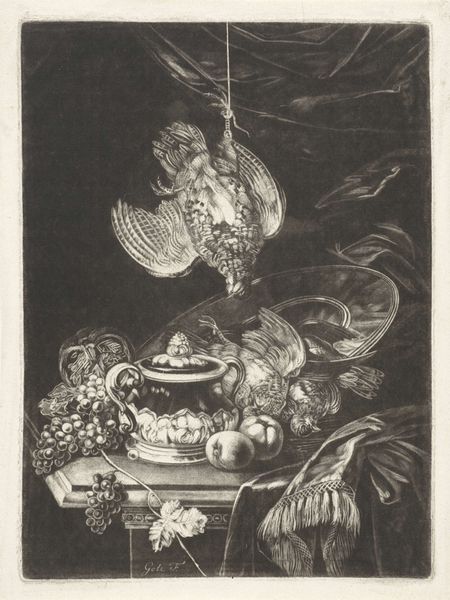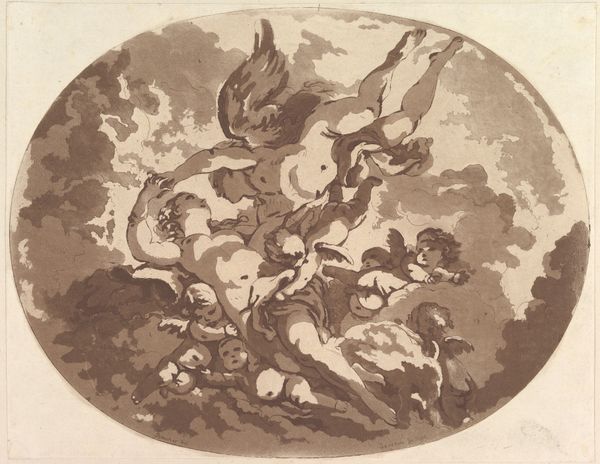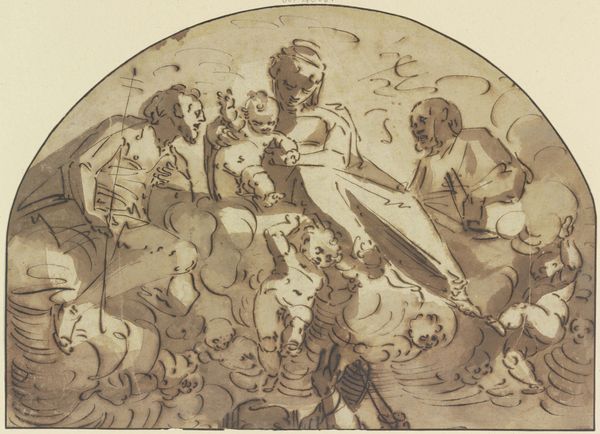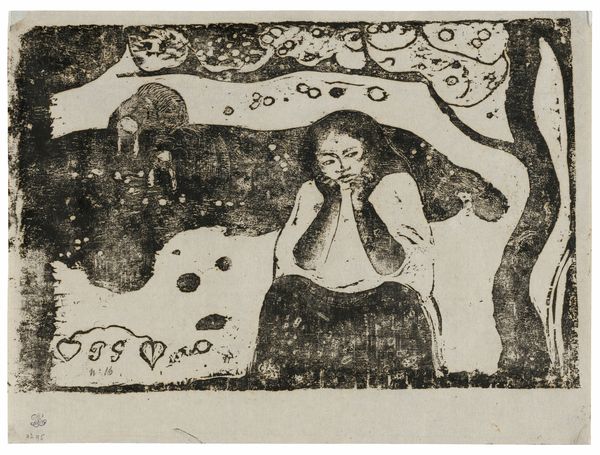
# print
#
figuration
#
geometric
#
history-painting
Dimensions: height 450 mm, width 603 mm, height 501 mm, width 650 mm
Copyright: Rijks Museum: Open Domain
Curator: Aat Verhoog's print, "The Joy of the Law," made between 1952 and 2005, holds quite the unsettling tableau. My first impression is pure tension; the figures reach upward, but it's an unsettling aspiration, tinged with fear. What’s your read? Editor: Absolutely! The grayness itself conveys something of being trapped, I think. Then there's the odd dichotomy. Human figures, but what are they reaching toward? It's two perfect, almost diagrammatic circles. Curator: Exactly! Those circles resonate so powerfully; geometric precision juxtaposed with the messy, striving figures. It reminds me of the struggle to impose order, the Law perhaps, onto chaotic human experience. Like trying to contain the ocean in a teacup! Editor: The spheres do appear to have targets or diagrams, it feels, within their shape; the Law feels as if it represents unattainable goals, impossible measures that demand a loss of self. You begin to see that with how obscured these figures are. What do you feel that obscurity gives? Curator: It abstracts their humanity, rendering them archetypal, universal. It also emphasizes the desperate effort—they are straining, losing themselves, just to touch…what exactly? It brings out the cruelty of a fixed, unreachable standard. It feels very bleak. But tell me more on the target shapes within the orbs; it speaks of something fixed and final. Editor: It echoes that psychological idea of the mandala, where simple geometric symbols offer the reconciliation of the fragmented self through the focus on images of wholeness and the centre. Here, you're offered two perfect but untouchable images that demand self-sacrifice. It reminds me how symbolic sight can bring cultural meaning and trauma to life. Curator: It brings forth how Verhoog powerfully conveys that fraught tension between the ideal and the real. It's a potent visual, stirring discomfort and unease and lingering questions. It asks, can 'joy' and 'law' truly coexist without sacrifice? Editor: A troubling dance of control and chaos. It leaves us contemplating not just the law itself but its very human cost and echoes how deeply the idea of Law is entrenched in symbolism across all of our cultures.
Comments
No comments
Be the first to comment and join the conversation on the ultimate creative platform.
